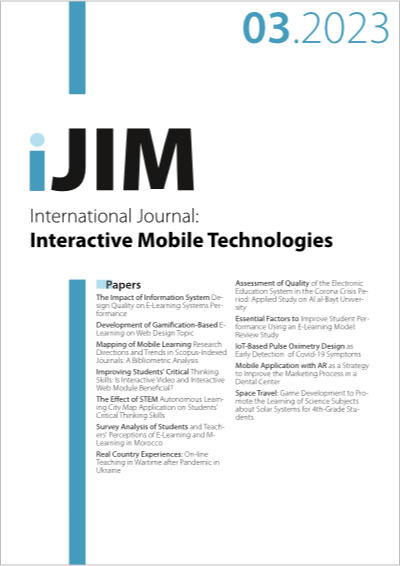The Effect of STEM Autonomous Learning City Map Application on Students’ Critical Thinking Skills
DOI:
https://doi.org/10.3991/ijim.v17i03.34587Keywords:
Autonomous Learning, City Map Application, Critical Thinking, Elementary School Students, STEMAbstract
This research aims to discover the effect of STEM autonomous learning city map application on the students’ critical thinking skills. The design of the research is quasi-experimental with pre-test and post-test control groups. The population of the research is the fourth graders of an elementary school with a total of 60 students involved as the research samples. To collect the data, the research instruments used are a test and an interview. The test is to gain the data of the students’ critical thinking skills while the interview is to gain information regarding the students’ experiences with STEM autonomous learning city map. The findings revealed that there is a significant difference of the critical thinking skills between the students of both groups (Asymp. Sig. 2-tailed = 0.015, p<0.05). The critical thinking skills of the students in the experiment class were increased by 23.7%. In addition, compared to the students in the control group, those in the experimental group showed a more positive attitude towards their experiences of learning using STEM autonomous city map application. Owing to this, it can be concluded that learning with the STEM autonomous learning city map application can affect students’ critical thinking skills positively.
Downloads
Published
How to Cite
Issue
Section
License
Copyright (c) 2023 Neni Hermita, Dr. Jesi Alexander Alim, Zetra Hainul Putra, Ph.D., Dr. Riki Apriyandi Putra, Dr. Subuh Anggoro, Dr. Nini Aryani

This work is licensed under a Creative Commons Attribution 4.0 International License.



